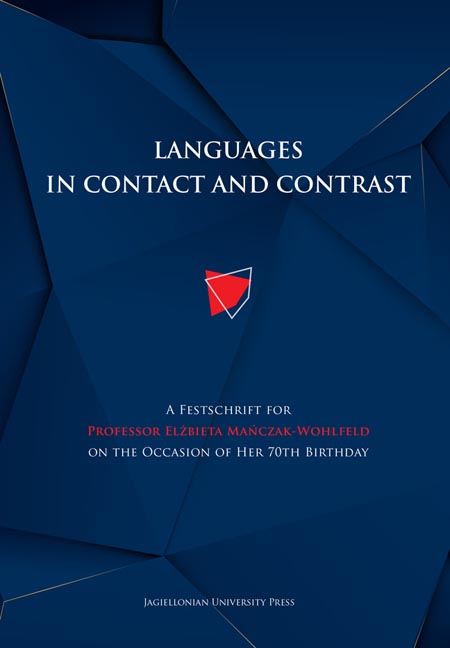 Languages in Contact and Contrast
Languages in Contact and Contrast Published online by Cambridge University Press: 14 October 2023
Introduction
It is only in recent studies that the corpus-based analyses of loans, traditionally being typically quantitative and form-oriented, have begun to focus on the usage of loans in specific contexts and on the recipient language users’ communicative needs, reflected also in the conscious choices of the formal variants of loanwords.
The description of the morphological and graphic adaptation of English-sourced adjectives in Polish presented in this paper is based on corpus-retrived data for two reasons. Firstly, some of the examples used to illustrate formal variance are relatively recent lexical loans not listed in SZA (2010) or in Polish dictionaries of foreign words (WSWO, SWO). Secondly, lexicographers tend to be selective in their choices of the formal variants of loanwords, which is conditioned by the sources used in dictionary compilation and/or the degree of linguistic purism. Large language corpora including diverse texts and genres are not, by definition, normativity-oriented; thus they are an adequate source for the retrieval of authentic material.
While the paper focuses on the morphological and graphic adaptation of English adjectival lexical loans, it also addresses cases of parallel and unsystematic processes of loanword formal integration that result in formal variance. The coexisting morphological and graphic variants of English adjectival loanwords in Polish are attested in corpus-retrieved excerpts presented in this study. The term variance, seen as a manifestation of polymorphy in loanwords at the levels of pronunciation, spelling and morphology, is used after Winter-Froemel (2010: 66, 69).
The research question put forward in the present study is whether the formal variance observed in English adjectival loanwords in Polish is an exclusive result of the integration procedure being an ongoing gradual process spread over a period of time, illustrated for instance by the English-sourced Polish adjectives casualny and casualowy, and ultimately każualowy (corpus queries might be of help here to determine frequency of the loan variants in respect of time), or is the simultaneous usage of the various morphological and graphic variants of loanwords by the recipient language speakers a reflection of conscious choices designed to evoke intended pragmatic effects.
To save this book to your Kindle, first ensure [email protected] is added to your Approved Personal Document E-mail List under your Personal Document Settings on the Manage Your Content and Devices page of your Amazon account. Then enter the ‘name’ part of your Kindle email address below. Find out more about saving to your Kindle.
Note you can select to save to either the @free.kindle.com or @kindle.com variations. ‘@free.kindle.com’ emails are free but can only be saved to your device when it is connected to wi-fi. ‘@kindle.com’ emails can be delivered even when you are not connected to wi-fi, but note that service fees apply.
Find out more about the Kindle Personal Document Service.
To save content items to your account, please confirm that you agree to abide by our usage policies. If this is the first time you use this feature, you will be asked to authorise Cambridge Core to connect with your account. Find out more about saving content to Dropbox.
To save content items to your account, please confirm that you agree to abide by our usage policies. If this is the first time you use this feature, you will be asked to authorise Cambridge Core to connect with your account. Find out more about saving content to Google Drive.